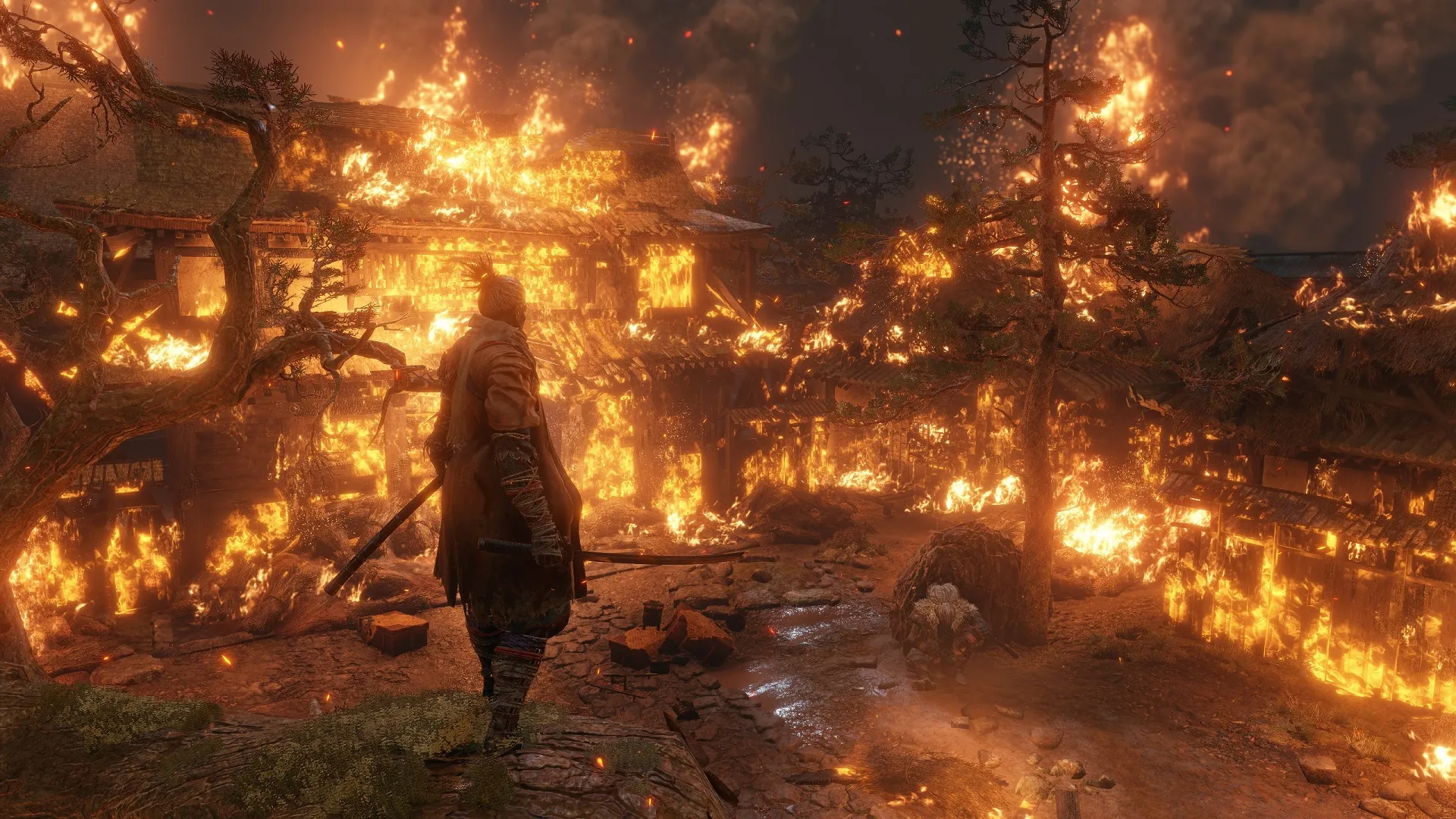
Sekiro: Shadows Die Twice Review: A Shinobi’s Dance with Death
Contents
FromSoftware, the creators of the notoriously challenging Dark Souls series, return with Sekiro: Shadows Die Twice, a game that trades medieval fantasy for the vibrant landscapes of Sengoku-era Japan. While retaining the studio’s signature difficulty, Sekiro introduces a completely revamped combat system focused on aggressive parrying and relentless pressure, offering a thrilling new experience for veterans and newcomers alike.
A New Rhythm of Combat
Fans of the methodical combat of Dark Souls and the faster-paced action of Bloodborne will be immediately struck by Sekiro‘s unique approach. Gone is the stamina bar, replaced by a “Posture” system that demands constant engagement and precise timing. As a highly mobile shinobi, Sekiro can traverse the environment with speed and fluidity, chaining together attacks and evasive maneuvers without the limitations of stamina management.
 Sekiro
Sekiro
However, the absence of a stamina bar doesn’t equate to easier combat. The Posture system fills as you block attacks or take damage. A full Posture meter leaves you vulnerable to a devastating Deathblow. Combat becomes a tense dance of managing both your own and your opponent’s Posture, seeking the perfect opening to deliver the fatal strike.
 Sekiro
Sekiro
Even seasoned Soulsborne players will find themselves relearning the art of combat. Success relies on precise parries, deflecting attacks at the exact moment to break the enemy’s Posture. Missing a parry can quickly turn the tide of battle, leading to a swift demise.
Stealth and Strategy
While direct confrontation can be exhilarating, Sekiro encourages a more thoughtful approach. The grappling hook adds a new dimension to traversal, allowing Sekiro to reach vantage points and survey the environment. This opens up opportunities for stealth, allowing players to thin the enemy ranks before engaging in open combat.
 Sekiro
Sekiro
The game’s level design rewards careful planning and execution. Using stealth, environmental traps, and even strategically utilizing non-player characters can significantly ease the challenge of some encounters. The fight against Juzou the Drunkard, for example, can be made considerably easier by employing stealth and NPC assistance.
 Sekiro
Sekiro
A Shinobi’s Arsenal
While Sekiro’s primary weapon is a katana, the prosthetic arm provides a diverse range of combat options. Unlockable upgrades transform the prosthetic into a versatile tool, capable of wielding axes, firecrackers, and even a shield.
 Sekiro
Sekiro
These prosthetic tools, combined with unlockable Combat Arts and limited-use Ninjutsu techniques, add depth and variety to the combat. Players can tailor their approach to suit their playstyle, experimenting with different combinations to overcome challenging encounters.
 Sekiro
Sekiro
The Consequences of Death
Death in Sekiro is more than just a setback. The Dragonrot mechanic adds a new layer of consequence to repeated failures. Dying too often inflicts this debilitating ailment on NPCs, hindering their interactions and potentially blocking progress in certain questlines.
 Sekiro
Sekiro
While resurrection is possible, it’s a limited resource. The “Shadows Die Twice” mechanic allows for a second chance after death, but overuse can deplete these resurrections, requiring careful management.
A Gallery of Bosses
Sekiro boasts a roster of over 50 unique bosses, each presenting a distinct challenge requiring careful observation and adaptation. From the agile Lady Butterfly to the imposing Guardian Ape and the terrifying Demon of Hatred, each encounter is a memorable test of skill and strategy.
 Sekiro
Sekiro
A World of Shadows and Beauty
The world of Sekiro is a visually stunning depiction of Sengoku-era Japan. From lush forests to imposing castles, the environments are richly detailed and interconnected, offering a vast and intriguing world to explore.
 Sekiro
Sekiro
Conclusion
Sekiro: Shadows Die Twice is a bold new direction for FromSoftware. While its innovative combat system and stunning world are undeniable strengths, the game’s unbalanced mechanics and repetitive soundtrack prevent it from surpassing the studio’s previous masterpieces. Nevertheless, Sekiro offers a unique and challenging experience that will captivate fans of the genre and reward those who persevere through its demanding trials. The game is available on PC, Xbox One, and PS4.
System Requirements
Minimum:
- OS: Windows 10 64-bit
- CPU: Intel Core i3-2100 | AMD FX-6300
- RAM: 4 GB
- GPU: NVIDIA GeForce GTX 760 | AMD Radeon HD 7950
- Storage: 25 GB
Recommended:
- OS: Windows 10 Pro 64-bit
- CPU: Intel Core i9-9900K @3.6 GHz
- RAM: 16 GB
- GPU: ASUS ROG Strix RTX 2080 OC 8GB
- Storage: Samsung EVO 970 MVMe 1TB





Comments (0)